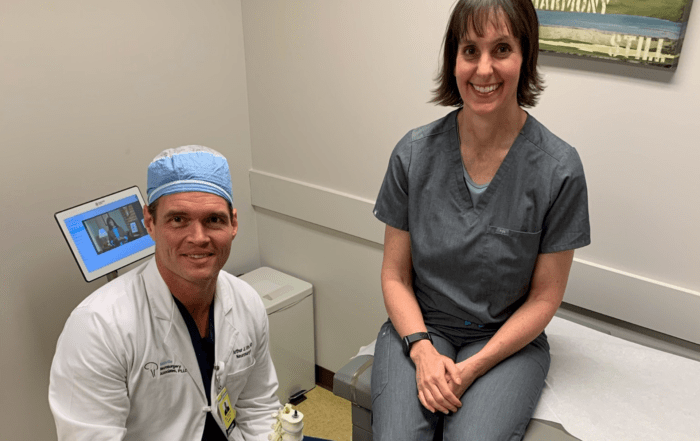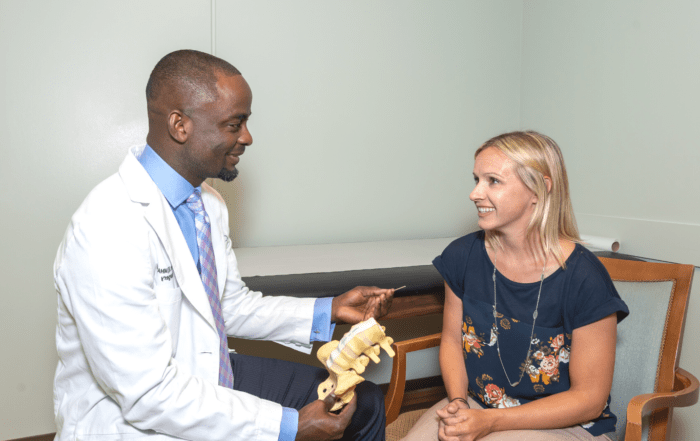Conditions We Treat.
Expert Neurosurgical Care.
At Nashville Neurosurgical Associates, we treat a wide range of neurosurgical conditions. Our team of expert neurosurgeons each provide expertise in the care and treatment of brain, spine and nerve disease. With our extensive credentials and experience, we are proud to be one of the region’s leading providers of expert neurosurgical care and treatment.
We are pioneers in the treatment of complex conditions, such as trigeminal neuralgia and hemifacial spasm. We also provide a full range of neurosurgical care and provide cutting-edge, minimally invasive treatment for a variety of neurosurgical conditions, including the following.
SPINE DISEASE
Spine disease describes any disease that primarily affects the spine. The spine is a series of vertebrae that run along the back, or the backbone. It protects the spinal cord, internal organs and nerves that run through the back. The spine has four regions: cervical, thoracic, lumbar and sacral.
BRAIN TUMORS
A tumor is an abnormal growth of tissue or cells in the body. Brain tumors occur in the brain or in nearby tissue. There are many different types of brain tumors, and treatment must be personalized to each patient. Brain tumors can be cancerous—malignant—or noncancerous—benign.
BRAIN ANEURYSM
A cerebral aneurysm, also known as a brain aneurysm, arises from a weak spot in the wall of an artery in the brain, which leads to a balloon-like pouch or sac. Brain aneurysms occur more commonly in women than men. They occur mainly in adults and are rare in children. Learn more.
PERIPHERAL NERVE DISEASE
Peripheral nerve disease affects the peripheral nervous system. Nerves are fibrous material throughout the body that transmit signals through small electrical pulses. The peripheral nervous system involves all nerves outside the brain and spinal cord (central nervous system). Peripheral nerve disease most commonly affects the nerves in the hands, arms, legs and feet.
HYDROCEPHALUS
Hydrocephalus results from the excessive accumulation of fluid in the cavities of the brain. When an injury or illness changes the brain’s circulation, fluid can build up. In adults, this can occur for many reasons, but most often it is due to hemorrhage, infections, brain damage, stroke or tumors. In some cases, no cause can be identified. Learn more.
CHIARI MALFORMATIONS
Chiari malformations arise when a part of the brain (cerebellar tonsils) extends down into the opening at the base of the skull where the spinal cord exits. The presence of the tonsils within this part of the brain can result in abnormal spinal fluid flow and create direct pressure on the brainstem. These malformations usually occur without any known cause. Learn more.
TRIGEMINAL NEURALGIA
Trigeminal neuralgia is a chronic pain condition that affects the nerves in the face. The pain in trigeminal neuralgia is caused by compression of the trigeminal nerve, which carries signals from the face to the brain. Patients with trigeminal neuralgia experience facial pain that can be triggered by even mild sensations, like brushing teeth. Learn more.
HEMIFACIAL SPASM
Hemifacial spasm is characterized by an involuntary twitching or spasm of the facial muscles. Hemifacial spasm results from uncontrolled contractions of the muscles of the face. It is caused by compression of the facial nerve, which is typically caused by a displaced artery or vein. Learn more.
VASCULAR MALFORMATION
The vascular system runs throughout the body and is made up of vessels. These vessels circulate blood through the body. Disruptions in this system are called vascular malformations. These malformations are congenital, meaning they are present at birth, but may appear on the body at any age. Vascular malformations are rare, and the cause is not well-known.
STROKE
A stroke occurs when the blood flow to the brain is reduced or interrupted. This deprives the brain of oxygen and nutrients. Symptoms of stroke include trouble speaking or understanding and paralysis or numbness of the face, arm or leg.



